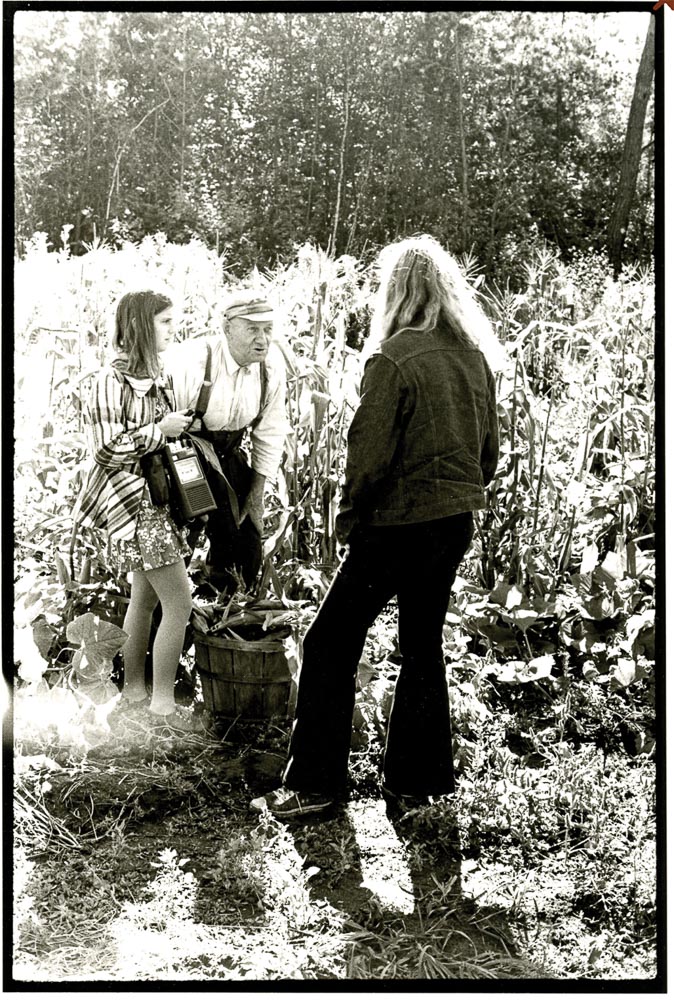By Brian Kevin
Photos by Jay York
From our March 2023 issue
Octogenarian farmer Reid Chapman was pulling up cucumbers and tomatoes one afternoon in the summer of 1973 when two teenagers walked across his West Kennebunk field and asked to interview him for their high-school magazine project. Sure, said the canny old farmer. If they got picking and helped him get his veggies in before the rain, he’d sit and talk with them all they liked.
It was an appropriately down-home start to what has become one of the country’s most impressive and longest-running documentary storytelling projects. Today, it’s the Salt Institute for Documentary Studies, housed at Portland’s Maine College of Art & Design. Fifty years ago, it was a student project launched by Kennebunk High School English teacher Pamela Wood. Inspired by Foxfire, a then-buzzy student-run magazine from Georgia, which collected lore and know-how from old-time Appalachians, Wood sent her students into the farm fields and boatyards and clam flats to interview and photograph Mainers who knew something of New England’s fading folk skills and traditions. The effort was part journalism and part oral history. In the first issue of a magazine the students named Salt, Wood declared, “Salt is new, young, and feisty. But we bring you what is old, mellow, and wise.”


In 1977, Salt became a standalone entity, moving into a Kennebunkport boatyard and guiding students in not just documenting but also learning skills like boatbuilding and snowshoe making. In the decades to come, the school would phase out the traditional-skills curriculum, start enrolling college and college-age students (and others) from outside Maine, and relocate a few times, including to Portland, in 1989. All throughout, Salt put out a little powerhouse of a magazine, its frequency varying from quarterly to sporadic, which gradually expanded its focus from folklife to cover contemporary issues and Maine culture as it’s lived. The black-and-white photography had a fine-art sensibility; the writing kept up the Kennebunk high-schoolers’ reverent, deeply subject-focused approach — as did the audio stories, after the school introduced its now-renowned radio-production track, in the late ’90s.
These days, Salt, which folded the magazine in 2008 and merged with the Maine College of Art & Design in 2016, offers 15-week graduate certificate programs in either radio and podcasting or short film, as well as shorter, non-certificate courses. Public-media newsrooms across the country are rife with Salt alumni, and its grads are behind some of the most listened-to products of the podcast boom (to such an extent that Salt may deserve some credit for fueling it). “Any place you look in media,” director Isaac Kestenbaum says, “scratch not far below the surface, and there’s some Salt connection — especially in the last 20 years in audio.”


Left: Pamela Wood, Salt’s founding teacher, with Reid Chapman. Wood, who died in 2018, spearheaded Salt through 2001. Photographer Jay York was part of Salt’s inaugural 1973 class and is still a working photographer, in Portland.
Today’s Salt students are no longer focused explicitly on “what is old, mellow, and wise,” but they share the commitment to immersion that led students into Reid Chapman’s field 50 years ago. “There’s more of an emphasis now on story and storycraft,” Kestenbaum says, “but what’s constant is the emphasis on fieldwork, on getting in touch with people who aren’t necessarily seeking attention and learning how to develop a responsible and ethical relationship with those people.”
And that old feistiness? “You look back now at a magazine that’s 50 years old, and ‘young and feisty’ feels hard to imagine,” Kestenbaum says. “But it was pretty radical for the people going out and telling these stories to be high-school students — it wasn’t the traditional voices of authority, the old white guy on your television. And I think we’re still trying to tell stories in a way that isn’t top-down, still trying to tell those stories in new ways.”




